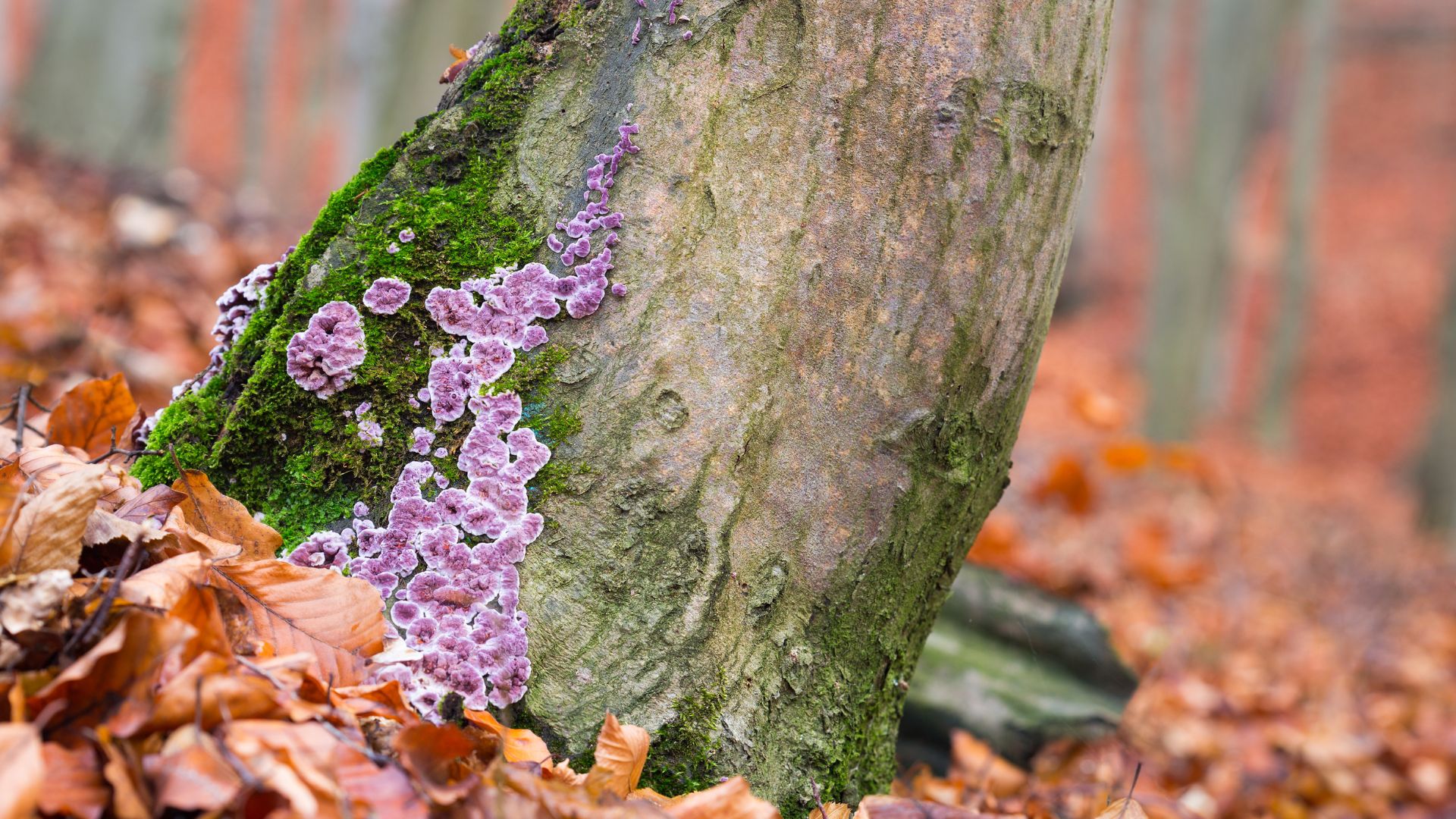In a 1st, man catches 'silver leaf,' a tree fungus never before seen in humans
A fungus that normally infects trees caused an abscess to form in a man's neck.

In a first-of-its-kind medical case, a man in India contracted a fungal disease that typically affects trees and had never been reported in a human before.
The 61-year-old man had difficulty swallowing, hoarseness, cough, lack of appetite, fatigue and recurrent inflammation of the throat (pharyngitis) for about three months before seeking medical care, according to a case report published online on March 13 in the journal Medical Mycology Case Reports. The patient works as a mycologist, meaning he studies fungi, and he reported regularly working with decaying material, mushrooms and other fungi as part of his research.
A computerized tomography (CT) scan of the man's neck revealed a pocket of pus on the right side of his windpipe. The patient's doctors extracted a sample of pus from this abscess, analyzed it and found evidence of fungal growth. For example, by applying a stain to the sample, the team revealed a number of branching filaments, called hyphae, which are found in fungi. And in another test, the team allowed the pus to incubate in a lab dish and found that it grew a "creamy pasty colony" of fungus within a few days.
The fungal species could not be identified from its physical features, so the team sent a sample off to the World Health Organization (WHO) Collaborating Centre on Reference and Research on Fungi of Medical Importance in India. Through a genetic analysis, the WHO researchers identified the fungus as Chondrostereum purpureum, which causes a disease called silver leaf in plants.
Related: Cause of mysterious brain-invading-fungus outbreak finally discovered
"The patient denied having worked with such a plant pathogen but he confirmed that he was working with decaying material and other plant fungi for a long time as part of his research activities," the case report doctors wrote in their report. The patient's infection was successfully treated with a procedure to drain the pus from his neck followed by a two-month regimen of broad-spectrum antifungal pills. After two years of follow-up monitoring, "the patient was absolutely fine and there is no evidence of recurrence," his doctors reported.
C. purpureum infects a wide range of trees, including fruit-bearing trees like apple, pear and cherry trees, as well as ornamental trees like maples, oaks and elms, according to the University of Wisconsin-Madison Plant Disease Diagnostics Clinic. Infected trees develop a silver sheen on their leaves, as the infection causes the outermost layer of the leaves to separate from the layers beneath.
Sign up for the Live Science daily newsletter now
Get the world’s most fascinating discoveries delivered straight to your inbox.
Since this is the first time a C. purpureum infection has been observed in a human, it's unclear how likely it is to occur in others e or how such infections can best be treated.
"This case report demonstrates the crossover of plant pathogen into humans when working in close contact with plant fungi," the case report authors wrote. "The cross-kingdom pathogenicity demands much work to be done in order to explore insights of the mechanisms involved, thus leading to possible recommendations to control and contain these infection."

Nicoletta Lanese is the health channel editor at Live Science and was previously a news editor and staff writer at the site. She holds a graduate certificate in science communication from UC Santa Cruz and degrees in neuroscience and dance from the University of Florida. Her work has appeared in The Scientist, Science News, the Mercury News, Mongabay and Stanford Medicine Magazine, among other outlets. Based in NYC, she also remains heavily involved in dance and performs in local choreographers' work.
Flu: Facts about seasonal influenza and bird flu
What is hantavirus? The rare but deadly respiratory illness spread by rodents










